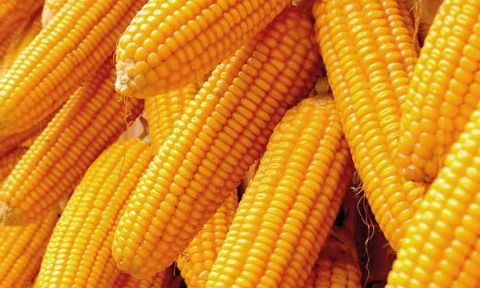Turkeys can be a fun, profitable addition to a small farm or homestead. They are usually raised for meat, although some people like to keep a tom (a mature male turkey) around as a pet. Before you decide to add turkeys to your farm, here are the basics on raising them the right way.
Should you raise turkeys?
This is definitely the first question to ask yourself. Are turkeys right for your farm? If you’ve raised chickens for eggs or meat, turkeys are similar – but they require a bit more babying, especially as poults (young turkeys). They are also very social with humans, much more so than chickens, so you’ll need to be willing to spend some time with your birds every day.
Choosing a Breed
Broad-breasted Whites are the “modern” eating turkey, similar to the ones you find in the supermarket (but even this breed, raised on pasture on a small farm, will taste far more flavorful than the supermarket variety). Standard Bronze and White Holland varieties are also popular breeds for meat production. Broad-Breasted Bronzes and Whites are not actual breeds, just a non-standardized commercial strain used for meat, while White Hollands and Standard Bronzes are recognized breeds. Heritage turkeys include Bourbon Reds and Narragansetts, which are striking, medium-sized birds that excel at foraging and pest control. Royal Palm turkeys grow to a smaller finished size of roughly ten to sixteen pounds and are beautiful, different-looking birds.
Raising Turkeys From Poults
Typically, you will be starting with day-old turkeys in the spring, called poults. You will need to set up a brooder area (link) just like you would for chickens. There are lots of do-it-yourself ideas for brooder areas, from a feeding trough to a kiddie pool. Just like starting chicks, you will need to keep the brooder area between 90 and 100 degrees Fahrenheit for the first week, then slowly lower the temp by raising the lamps, cooling it by 5 degrees each week. Many of the same places that sell chicks also sell turkey.
Housing and Fencing Turkeys
Turkeys require a different setup as far as housing and pasture from laying hens. They like to be outdoors regardless of the weather, although they do need to be eight to twelve weeks of age before they can safely be on pasture. Before then, they should be kept in a brooder, perhaps with access to a sun porch.
Turkey Pen Requirements
Once they’re able to live outside, you’ll want to provide your turkeys with a roosting area with a roof, protection from predators, and access to fresh pasture or range. Range is grass that is four to six inches long. Here’s what turkeys require:
- Protection from predators
- Places to dust bathe
- Roosts to fly up into at night
- Access to range
- Enough space: 75 feet by 75 feet for up to 12 turkeys
Roosts for Turkeys
You can build a set of roosts, keeping them all at the same height so they don’t just fight for the top spots, that is either on skids or on wheels to be easily movable. A lightweight metal or fiberglass panel roof keeps them out of the weather.
Moveable roosts keep manure from building up in one spot in the turkey pen.
Wood is an ideal construction material, although electrical conduit can also be used on top of wooden skids to keep the pen lightweight and easily moved. If the roost or turkey tractor is very lightweight, it may need to be staked down so it doesn’t blow over or away.
A 5 by 8 foot roost will house about 20 turkeys.
Fencing for Turkeys
Turkey fencing should be as high as possible – at least four feet – given that these birds can and will fly. You can also trim the wing feathers of rogue flyers, as most turkeys will probably stay in the pen happily unless something disturbs them. If you can top the fence with netting, it will help protect them and prevent escape.
For temporary fencing, you can use electric poultry netting. If you want to build a more permanent enclosure, use woven-wire fencing and metal T-posts or wooden posts.
Turkeys can be turned out onto pasture with cattle and will scratch and pick corn and other undigested grains out of the cow manure, spreading it and improving pasture. They will eat pest weeds such as nettles, dock, and chicory, also improving pasture.
Make sure the fencing is flush to the ground and sturdy so that the turkeys are protected from predators such as fox, raccoons, weasels and neighborhood dogs.
Housing for Breeding Turkeys
Thus far, recommendations for simple movable roost structures and fenced pens assume you are raising spring turkeys that will be slaughtered for meat at around 28 weeks of age, and thus you don’t need winter housing or separate spots for toms and hens, or places for broody hens to set on clutches of eggs.
A pen with solid sides makes a good space for a broody to hatch out poults. This can be within the larger turkey house.
For breeding, a more solid, permanent house can work well. Divide it in to at least two separate spaces to keep toms and hens separately. You can let out toms for a few hours every day to graze, then let them back in and let the hens out to graze. Feeding them is a good way to get them to return to their pens.
Even for breeding stock, make sure the turkeys have access to pasture. About half of an adult turkey’s diet will be made up of grass and plants from pasture.
Feeding and watering turkeys
Learning how to feed and water your turkeys properly can help prevent a lot of problems as well as save you money on feed. Although it may seem simple, there are many different choices of types of waterers and feeders, and different ones may be appropriate for specific situations.
Feeding and Watering Turkey Poults
When you first get your turkey poults, you will want to have feeders and waterers set up and filled, ready to go. This way when the poults first arrive, you can dip their beaks in the water and make sure they start eating soon after settling in.
For these baby poults, a one-gallon chick waterer is the best option. Avoid open dishes, buckets or pans of water, because poults may fall in, get chilled and die, or even drown.
The bottom half of an egg carton makes a good first feeder for poults. Another option is red plastic chick feeders that have oval-shaped openings through which the poults can reach the feed.
After a few days, a metal or wooden feeder can be used.
Hanging feeders tend to conserve feed. Just make sure that the bottom of the feeder is within comfortable reach of the turkey poults’ beaks. Avoid open pails of feed as well, because besides spilling it, the poults can all climb in on top of one another, hurting themselves.
Feeding and Watering Turkeys
As the poults grow, you can switch to a five-gallon metal waterer, or a nipple watering system. Make sure your waterer is sturdy and rugged, as large turkeys are quite strong.
For feeding, a large hanging feeder that can hold most of a 50-pound bag of feed is ideal. Some turkey farmers use a range feeder that is a trough-style. In either case, ensure that the edge of the feeder is at the level of the turkeys’ backs so that they can reach the feed easily, but don’t waste too much on the floor.
Once they’re on pasture, you will need to make sure the turkeys have access to coarse sand or fine gravel – the grit that they need to digest their food. Most likely they can find this right on the ground mixed with the soil.
Types of Turkey Feed
Use a chick starter or gamebird starter for turkey poults. Protein should be at least 28 percent for this starter, and you can feed it for the first six weeks. After six weeks, you can switch to a grower feed. It should have at least 20 percent protein (higher than that required for chickens).
Turkeys typically grow to slaughter size within six months. For an average tom, you will feed him approximately 100 pounds of feed, and for a hen, 60 pounds.
Adult turkeys will eat as much as fifty percent of their intake from pasture or range. Range is grass that is four to six inches long. Turkeys like to eat the growing tips of the grass. They will also enjoy any kitchen or garden scraps: lettuce, tomatoes, sweet corn, summer squash, and so on.
Preventing turkey problems and diseases.
Turkeys can be great birds to raise for meat and to keep as a breeding flock, but there are some problems and diseases you should be aware of as a small farmer, so you can avoid the losses and heartbreak of losing your flock.
Preventing Turkey Diseases
The best way to prevent turkey diseases is to allow them fresh air and range, in a large pen with roosts, and to move the turkey house or roosts frequently to fresh ground, so that manure doesn’t pile up in one location.
A disease common to chickens, blackhead, can affect turkey flocks even while it causes no symptoms in chickens. For this reason, it’s generally recommended that you don’t start baby chicks and turkey poults together, and that you house grown turkeys and chickens separately. And when you create your turkey house, place it somewhere that chickens have not been before.
There are some drugs you can purchase to feed turkeys to prevent blackhead, if you cannot keep them separate from chickens.
Coccidiosis
Coccidiosis is a disease that can cause diarrhea and lack of “thrift” or good growth in poults. Medicated feed contains drugs that help treat or prevent coccidiosis. Keeping litter dry is also important, as this organism spreads and grows in wet, dirty litter. Also getting poults out onto pasture by eight weeks of age, and moving roosts to fresh ground frequently, will help prevent coccidiosis. Some hatcheries will vaccinate against coccidiosis for a small fee per chick. In this case, you should not feed medicated feed, as it will inactivate the vaccine.
Airsacculitis
This is a respiratory disease that affects the turkeys’ air sacs. You can’t really treat airsacculitis. The main prevention is to make sure to purchase poults from a hatchery that tests for the disease in their breeding toms and hens. The disease is transmitted in the egg, so the poults get it before they are even born.
Cannibalism
While not really a disease, cannibalism can be a problem in the turkey flock. Giving them enough space (a 75 by 75 foot space is needed for every 20 turkeys or so, once they’re on range) can help this problem. Also, make sure they always have fresh feed and water. Ensure that they have enough ventilation if they’re in an indoor turkey house, because overheating can cause cannibalism as well.
Predators
Who wouldn’t love a really fresh, delicious free-range turkey? You’ll find that just about every wild critter – and some domesticated ones, too – are on the hunt for your pastured turkey flock. It can be stressful to keep them safe!
Providing roosts for your turkeys will not only keep them happy, but it will discourage predators who will have to climb to reach the birds. In the wild, turkeys roost safely, very high in trees. The higher you can make the roosts, the safer your turkeys will feel.
Making sure that the fencing around your turkey pen is secure will help deter predators as well. Covering the top of the fence with netting or more fencing will also help protect them. If running your woven wire fencing along the ground isn’t enough to deter weasels or raccoons, consider running a single strand of electric wire along the ground and another near the top of the fence. Insulate the woven wire fence from the strands or you’ll have the entire fence electrified! You just want one strand at the top and/or bottom. The top will deter anything from climbing over, and the bottom will stop anything from digging under.
If you have a breeding flock in a permanent turkey house, running a single strand of electric wire along the bottom of the outside of the turkey house will deter burrowing predators. Another option is to use electric net fencing to enclose your outdoor roosts or around your turkey house.
How to Slaughter and Process Turkeys on the Small Farm
Slaughtering and processing your own turkeys on-farm can be a rewarding, if messy, experience. Learn the basics of slaughtering, processing and butchering turkeys safely and humanely.
Can You Process On-Farm?
If you are going to sell turkeys at the farmers market, torestaurants, or otherwise bring the turkeys to market, you’ll need to make sure your facility is USDA-approved and meets all your local and state requirements for poultry processing. If you are going to sell directly from your farm to customers, you may be able to process without using a USDA-approved facility – check with your local extension service to find out.
Gather Supplies
You’ll want to have all your supplies gathered and your slaughter area set up before you begin. A turkey-sized killing cone should be mounted to the side of a building or a framework built out of wood. Here’s what you’ll need:
- Knives. Be sure your knives are sharp. Four to six inches in length is ideal. Two or more knives are needed.
- Killing cone. Find a turkey-sized killing cone at a farm supply store or order it from your hatchery. Some people DIY it with an orange traffic cone.
- Buckets and pails. A bucket or large plastic garbage pail underneath the killing cone and scalding area catches feathers and blood.
- Water. A hose with fresh, clean water is a necessity.
- Table. You need some kind of surface to process the birds on.
- Scalding tank. A very large pot or tank on a burner that can heat to 140 degrees F. Make sure the scalding tank is large enough to dunk and swirl the birds to remove the feathers.
- Cooler or tank with ice. A large cooler or tank filled with ice and cold water is necessary for chilling the birds after processing.
- Paper towels.
- Cutting board.
- Plastic bags for storage. There are heat-shrink bags available from farm supply stores that shrink tightly around the bird and prevent freezer burn.
Process the Turkey
- Grab the bird. Grab the bird feet first and let it hang upside down. This calms them as blood rushes to the head. Place the bird in the killing cone.
- Cut the artery and vein. Pull the bird’s head firmly through the bottom of the killing cone and hold it. Using a small, sharp knife, cut just behind where the tendon for the beak and tongue attaches. Your aim is to severe the jugular vein and carotid artery. Use a firm hand and slice deeply on both sides of the neck. Pull the head down firmly and allow the blood to drain.
- Scald and pluck the turkey. With your water at roughly 140 degrees F, plunge the turkey into the scalding tank, head first (hold the legs and feet). Swirl the bird in the water both around and up and down. Every few seconds, check to see if the feathers remove easily. When they do, remove the bird, secure it by the legs (a couple of nails in a board will hold each leg), and pluck the feathers.
- Process and eviscerate. After plucking, give the bird a good rinse. Remove the feet by cutting between the joints. Cut the head off with a sharp knife or cleaver. Slitting the neck skin, loosen the trachea and esophagus all the way down to where they enter the body. Loosen the crop and pull it free from the body.Insert the knife about one inch above the vent, slitting the skin carefully up to the breastbone (make sure not to cut into the intestines). Cut around either side of the vent and remove it.Reach into the bird and run your hand along the ribs to free the entrails. Feel the gizzard – a hard organ – and pull it out. The entrails will come with it, and so will the trachea, esophagus and crop if you’ve loosened them already.
Next, remove the lungs. There are special “lung scrapers” you can use, or you can just reach in and pull them out.
Remove the neck by cutting the muscle tissue around it, then bend it and break through the bone.
- Rinse and pack. Rinse the bird thoroughly, inside and out. Place the bird into a cooler filled with water and ice. Make sure the turkey is completely submerged. After chilling for at least 30 minutes (preferably an hour), remove the turkey and pat dry. You can then package the bird however you like, whether a large zip-close bag, a heat-shrink bag, or vacuum sealer.
- Age. The freshly butchered turkey should age for a few days before eating or freezing to avoid toughness.





Leave A Comment